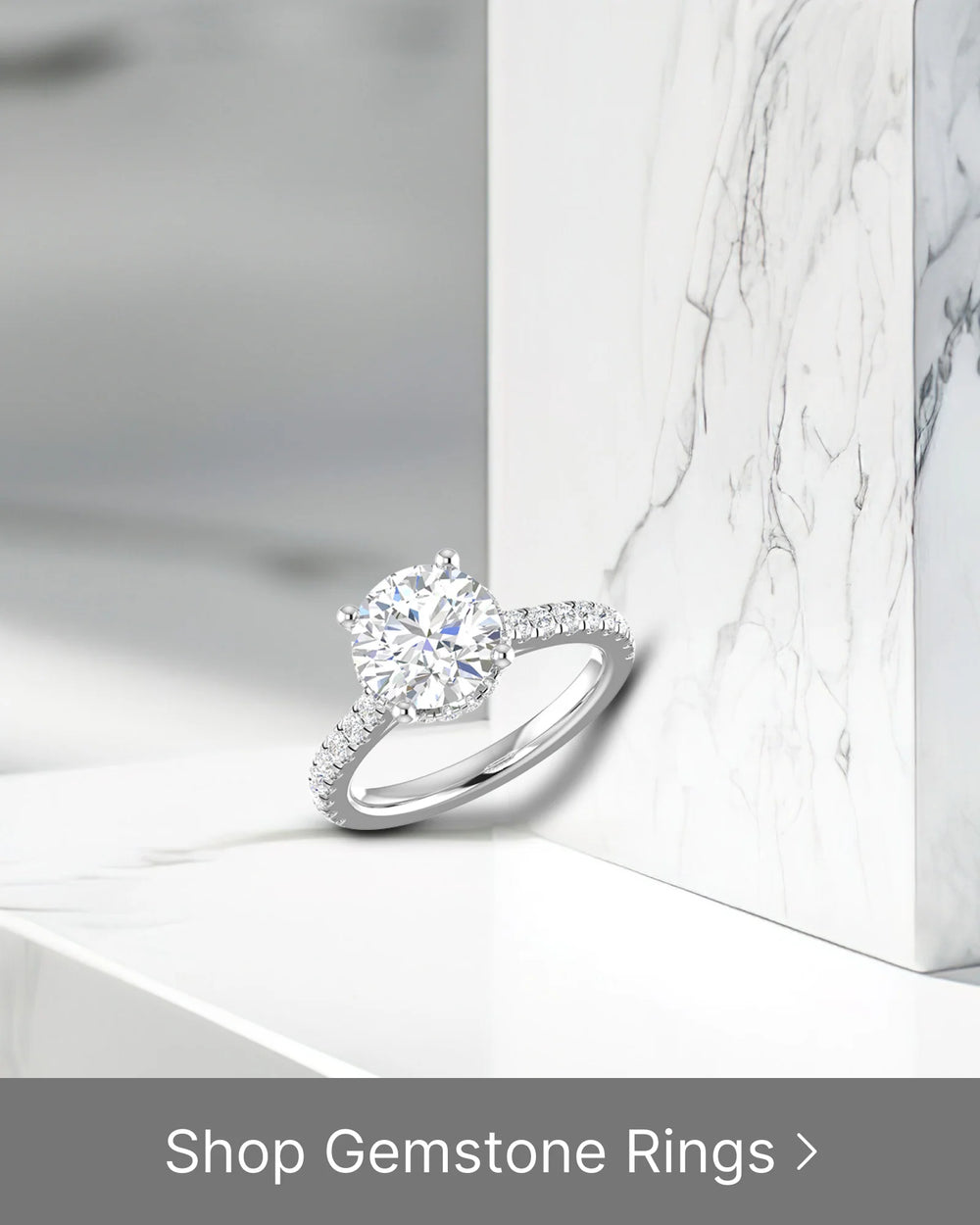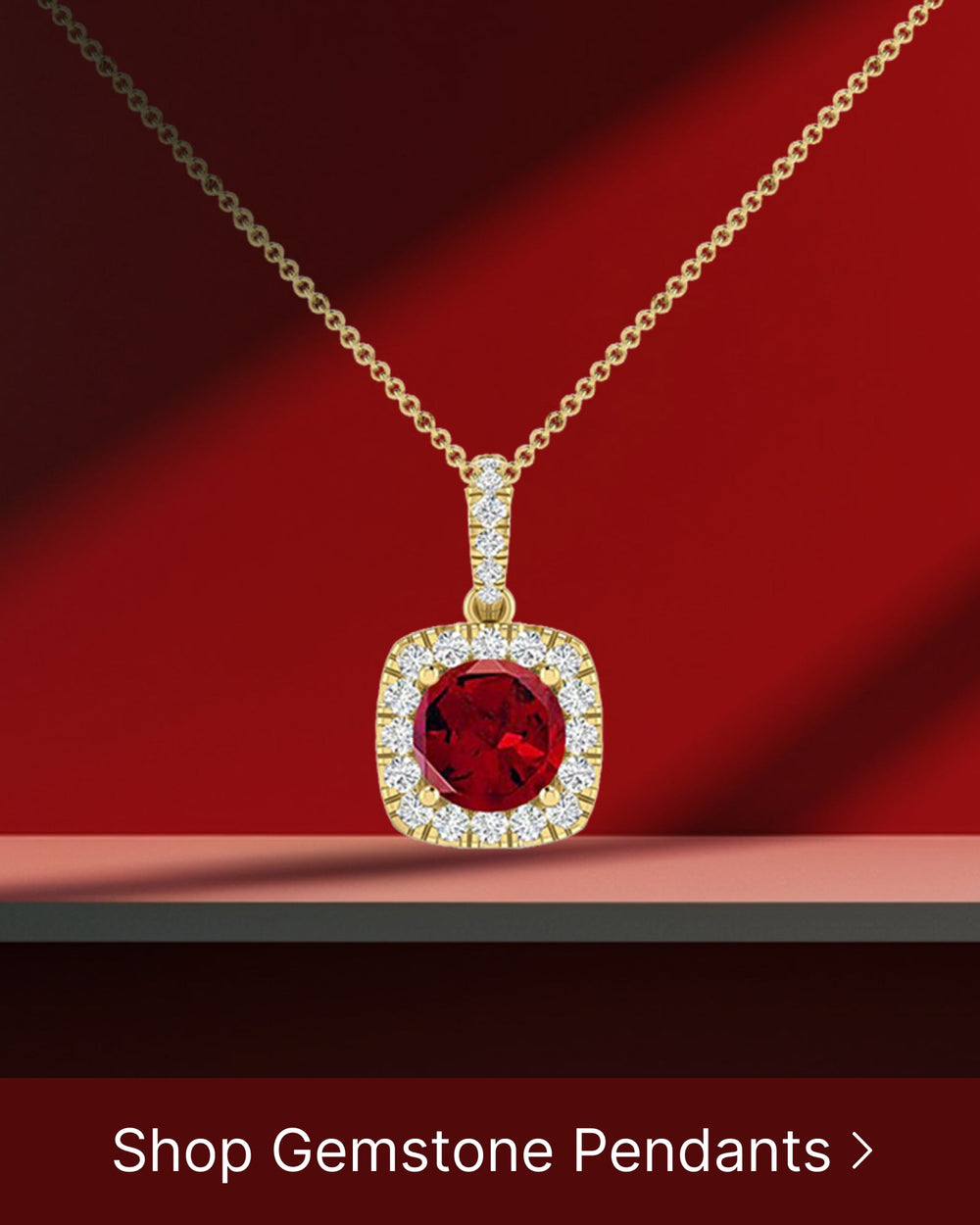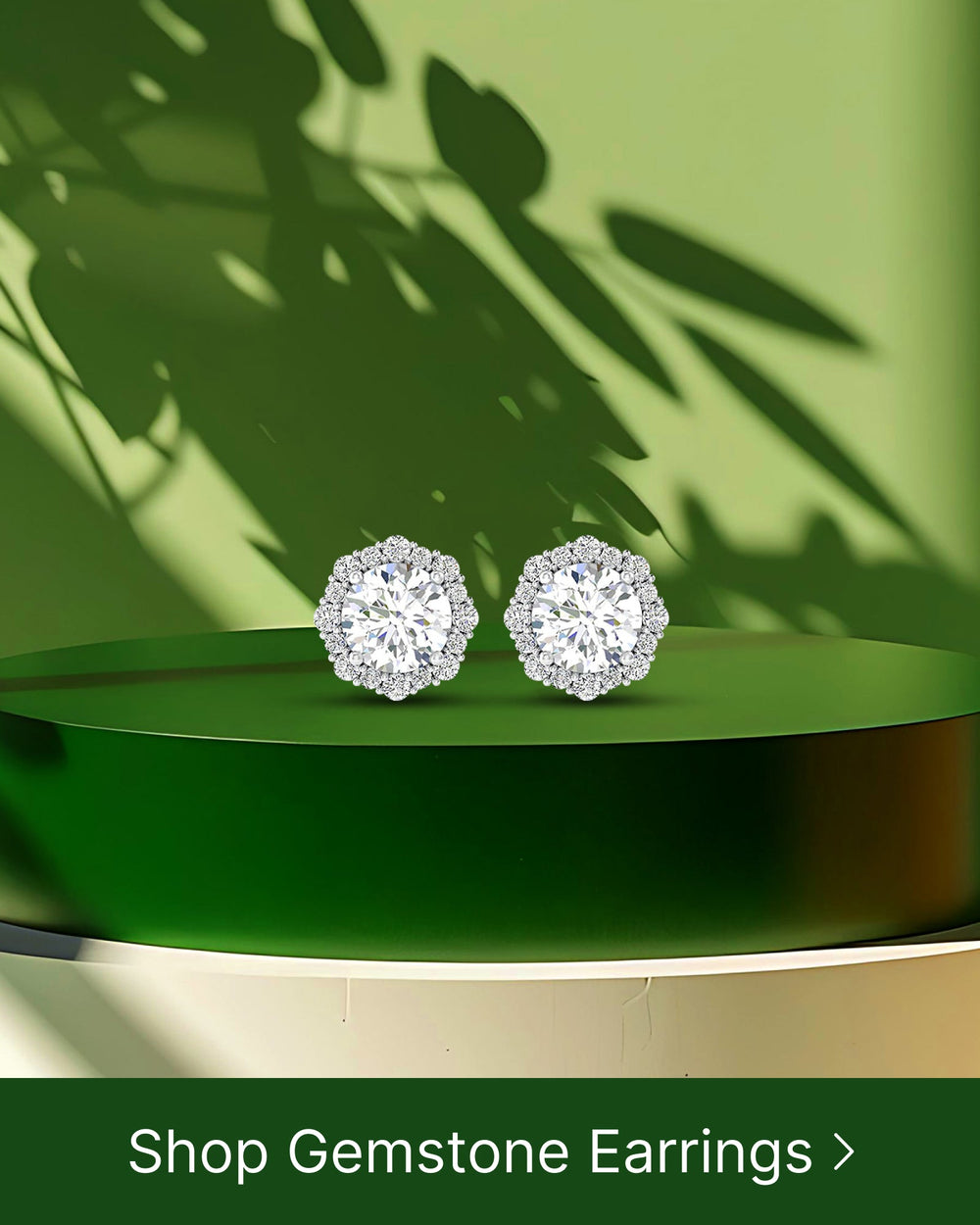Amethyst, with its mesmerizing deep purple hues, is a gemstone that has captivated humans for centuries. From its stunning presence in visual art to its significance in various cultures, amethyst tones have left an indelible mark on our world. In this article, we will delve into the diverse facets of amethyst, uncovering the science behind its colors, exploring its cultural symbolism, and discovering how we can incorporate its alluring tones into our daily lives.
Understanding the Amethyst Color Spectrum
Before we delve into the various dimensions of amethyst, let's first gain a better understanding of its color spectrum. Ranging from pale lavender to deep purple, amethyst displays an array of shades that evoke a sense of mystique and allure.
Amethyst, with its captivating color spectrum, has been a subject of fascination for centuries. The shades it encompasses, from the delicate pastels to the rich and vibrant purples, have intrigued gemstone enthusiasts and scientists alike.
The Science Behind Amethyst Colors
The enchanting hues of amethyst are not simply a product of chance; rather, they are a result of complex geological processes. The presence of iron impurities within the crystal lattice of amethyst gives rise to its distinctive purple tones. The intensity of the purple hue is determined by the amount of iron present, with deeper shades indicating a higher iron content.
But the story doesn't end there. Amethyst's coloration is also influenced by other factors. The geological conditions in which it forms play a crucial role in shaping its hues. For instance, the temperature and pressure during the formation process can affect the color outcome. Additionally, the presence of other minerals in the vicinity can interact with the amethyst, creating unique variations in color.
It is these intricate combinations of geological factors and chemical impurities that give rise to the kaleidoscope of amethyst shades we admire today. From the palest lilacs reminiscent of a delicate spring blossom to the majestic deep purples that evoke a sense of regality, each shade tells a story of its own.
The Psychological Impact of Amethyst Tones
Beyond its physical beauty, amethyst tones have a profound psychological impact on individuals. The deep purples and lavender hues are often associated with qualities such as spirituality, creativity, and tranquility.
Research suggests that exposure to amethyst tones can help reduce stress, promote relaxation, and stimulate the imagination. The calming energy emitted by amethyst has been sought after for centuries, with people incorporating it into their lives in various ways. Whether it's through the calming presence of amethyst crystals or the incorporation of amethyst-inspired elements in our surroundings, these shades can create a sense of harmony and well-being.
Imagine a serene meditation room bathed in soft amethyst light, where the mind can wander freely and find solace. Picture an artist's studio adorned with amethyst accents, where creativity flows effortlessly. These are just a few examples of how amethyst tones can enhance our lives and create a positive atmosphere.
Amethyst's psychological impact extends beyond the individual level. In ancient times, this gemstone was believed to possess spiritual properties, connecting the wearer to higher realms of consciousness. It was often used in religious ceremonies and believed to aid in spiritual growth and enlightenment.
Today, amethyst continues to be cherished not only for its beauty but also for its ability to inspire and uplift. Its soothing tones can bring a sense of tranquility to any space, making it a popular choice for interior design and decor.
The Role of Amethyst Tones in Art and Design
Amethyst tones have long held a prominent place in the world of art and design, adding depth and richness to various creative expressions. Let's explore how these captivating hues manifest in visual art and interior design.
Amethyst in Visual Art
Throughout history, artists have been captivated by the allure of amethyst tones, utilizing them to evoke emotion, create contrast, and convey a sense of intrigue. From the Renaissance masters' intricate use of amethyst pigments to modern abstract interpretations, the captivating hues continue to inspire art movements and leave a lasting impression on viewers.
Amethyst tones, with their dynamic energy, can elevate a piece, drawing the eye and creating a focal point within a composition. Whether it's a bold brushstroke of deep purple or a subtle hint of lavender, amethyst colors add a touch of magic to any artistic endeavor.
One notable example of amethyst's impact in visual art is Vincent van Gogh's famous painting "Starry Night." The deep, swirling blues and purples in the night sky are reminiscent of the mesmerizing hues found in amethyst gemstones. The use of these tones not only adds visual interest but also conveys a sense of mystery and wonder, inviting viewers to delve into the depths of the painting.
Another artist who embraced the enchanting qualities of amethyst tones is Georgia O'Keeffe. Her floral paintings often feature delicate petals in shades of purple, capturing the ethereal beauty of amethyst gemstones. Through her use of these tones, O'Keeffe invites viewers to appreciate the intricate details and subtle variations in color that can be found in nature.
Amethyst Tones in Interior Design
When it comes to interior design, amethyst tones have become a popular choice for creating luxurious and serene spaces. The rich purples inject a sense of opulence, while the softer lavender shades promote a soothing atmosphere.
Imagine stepping into a living room adorned with plush amethyst-colored velvet sofas, complemented by shimmering silver accents. The room exudes elegance and sophistication, creating a space where one can relax and unwind in style. The amethyst tones add depth and warmth, making the room feel inviting and cozy.
From accent walls adorned with amethyst-inspired wallpaper to carefully curated decor elements such as throw pillows, rugs, and curtains, incorporating amethyst tones can transform a room and infuse it with a sense of elegance and calm. Furthermore, the versatility of amethyst hues allows them to seamlessly merge with different design styles, be it modern, traditional, or eclectic.
For those seeking a more contemporary aesthetic, amethyst tones can be paired with sleek metallic finishes and clean lines to create a modern and luxurious ambiance. On the other hand, combining amethyst with vintage-inspired furniture and ornate details can evoke a sense of old-world charm and nostalgia.
Amethyst tones also have a psychological impact on the inhabitants of a space. The color purple is often associated with spirituality, creativity, and introspection. By incorporating amethyst hues into a room's design, one can create an environment that fosters introspection and encourages a sense of calm and tranquility.
In conclusion, amethyst tones have a significant presence in both visual art and interior design. From their historical use in paintings to their modern application in creating luxurious spaces, these captivating hues continue to inspire and captivate. Whether used to evoke emotion on a canvas or to transform a room into a haven of elegance, amethyst tones add a touch of magic and allure to the world of art and design.
The Symbolism and Cultural Significance of Amethyst
Beyond its aesthetic appeal, amethyst holds deep cultural symbolism and has played an integral role in various traditions and beliefs. Let's explore the historical and modern interpretations of amethyst symbolism.
Amethyst in History and Mythology
Throughout history, amethyst has been associated with various mythologies and legends. In ancient Greek mythology, amethyst was believed to ward off intoxication and protect against negative energy. The gemstone's association with sobriety and clarity led to its use in creating goblets and amulets during ancient times.
Across different cultures, amethyst has been embraced for its spiritual properties. It has been associated with qualities such as wisdom, clarity, and spiritual growth. From ancient Egyptians to Native American tribes, amethyst has been cherished for its mystical attributes.
Modern Interpretations of Amethyst Symbolism
In modern times, amethyst continues to hold significance and is often regarded as a symbol of inner strength, intuition, and balance. Many individuals turn to amethyst crystals for their purported ability to enhance spiritual growth and promote a sense of clarity.
Furthermore, the distinctive coloration of amethyst has made it a popular choice for jewelry, allowing individuals to carry its symbolic power with them throughout their daily lives.
Incorporating Amethyst Tones into Your Lifestyle
With their alluring shades and profound symbolism, amethyst tones offer a myriad of possibilities for incorporating them into various aspects of our lives. Let's explore how we can infuse amethyst hues into our fashion choices and home decor.
Amethyst Tones in Fashion
When it comes to fashion, amethyst tones can add a touch of elegance and sophistication. From statement jewelry adorned with amethyst gemstones to clothing pieces in rich purple hues, incorporating amethyst tones into our wardrobes allows us to showcase our individuality.
For those seeking a subtler approach, accessories such as scarves, handbags, and shoes in amethyst-inspired shades can effortlessly elevate an outfit and add a touch of allure. Whether it's a lavish evening gown or a casual ensemble, amethyst tones can be the perfect finishing touch.
Amethyst Hues in Home Decor
Transforming our living spaces into havens of serenity and style can be achieved by infusing amethyst-inspired elements into our home decor.
Consider incorporating amethyst accents, such as decorative pillows, throws, or artwork, to add pops of color and create a focal point within a room. Additionally, using amethyst-inspired wallpapers, curtains, or rugs can help create a soothing and visually captivating ambiance.
The Future of Amethyst Tones
As we move forward, the allure of amethyst tones continues to evolve, adapting to changing trends and influences. Let's explore the predicted future trends in amethyst usage and its ever-growing presence in digital media.
Predicted Trends in Amethyst Usage
Design forecasts suggest that amethyst tones will continue to be popular choices for both fashion and interior design. With their ability to add depth and elegance, these captivating shades have become timeless classics.
Furthermore, as sustainability and ethical sourcing become increasingly important, the popularity of amethyst, a natural gemstone, is expected to rise. Its eco-friendly nature and unique coloration make it an appealing choice for those seeking to make conscious design and lifestyle decisions.
The Evolution of Amethyst Tones in Digital Media
As our lives become more intertwined with digital media, amethyst tones have found their place in the virtual world. From website designs to social media aesthetics, the rich purples and soothing lavenders of amethyst add a touch of sophistication and visual appeal.
The evolution of technology allows us to explore the nuances of amethyst hues, bringing their beauty to life in digital art forms and virtual experiences. As we continue to embrace digital media as a means of self-expression, amethyst tones will undoubtedly continue to be a prominent presence.
In conclusion, the allure of amethyst tones extends far beyond their aesthetic appeal. From their scientific origins and psychological impact to their cultural symbolism and future trends, amethyst tones continue to captivate and inspire. Whether we choose to incorporate them into our fashion choices, home decor, or digital experiences, amethyst tones offer us a window into a world of beauty, creativity, and tranquility.






